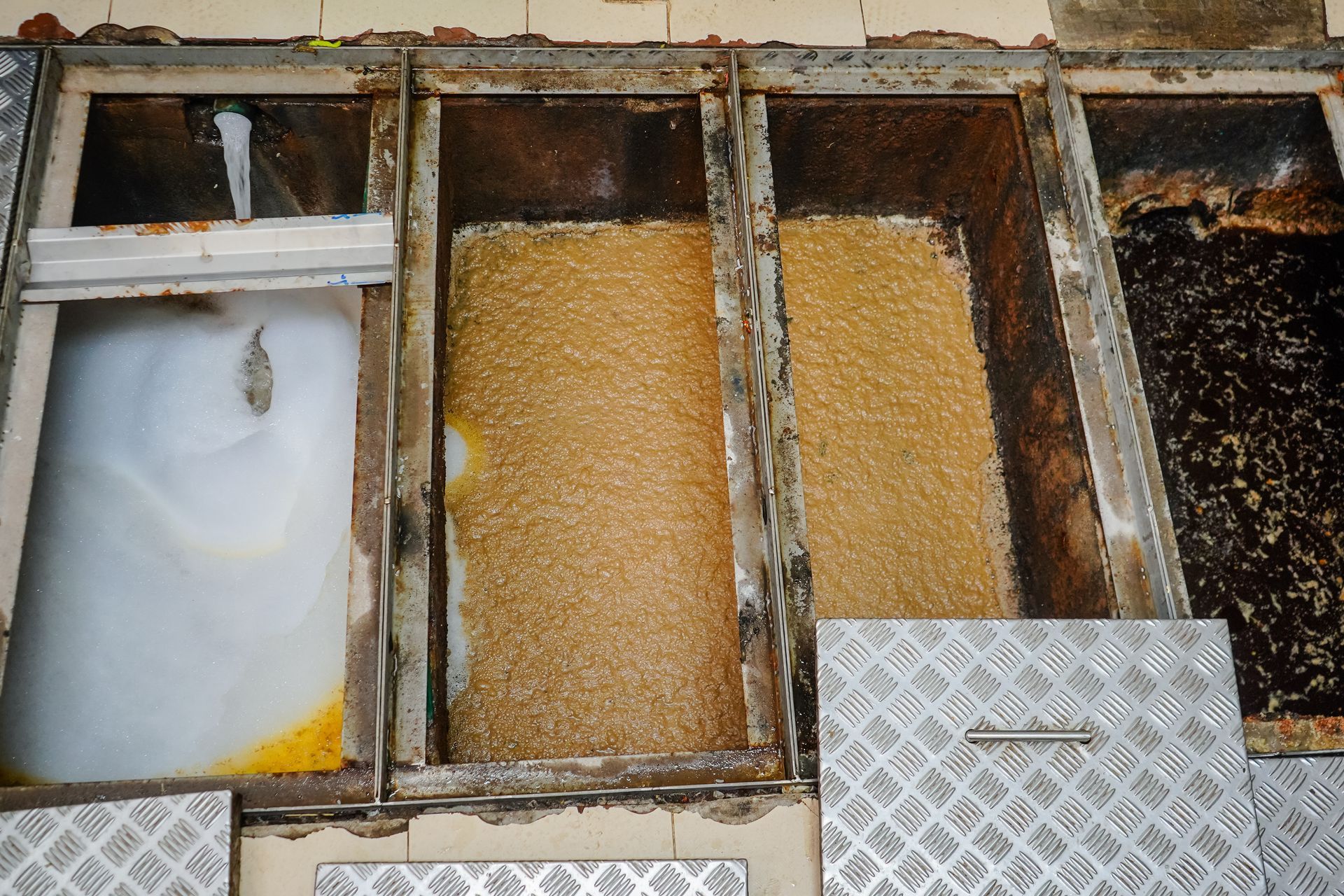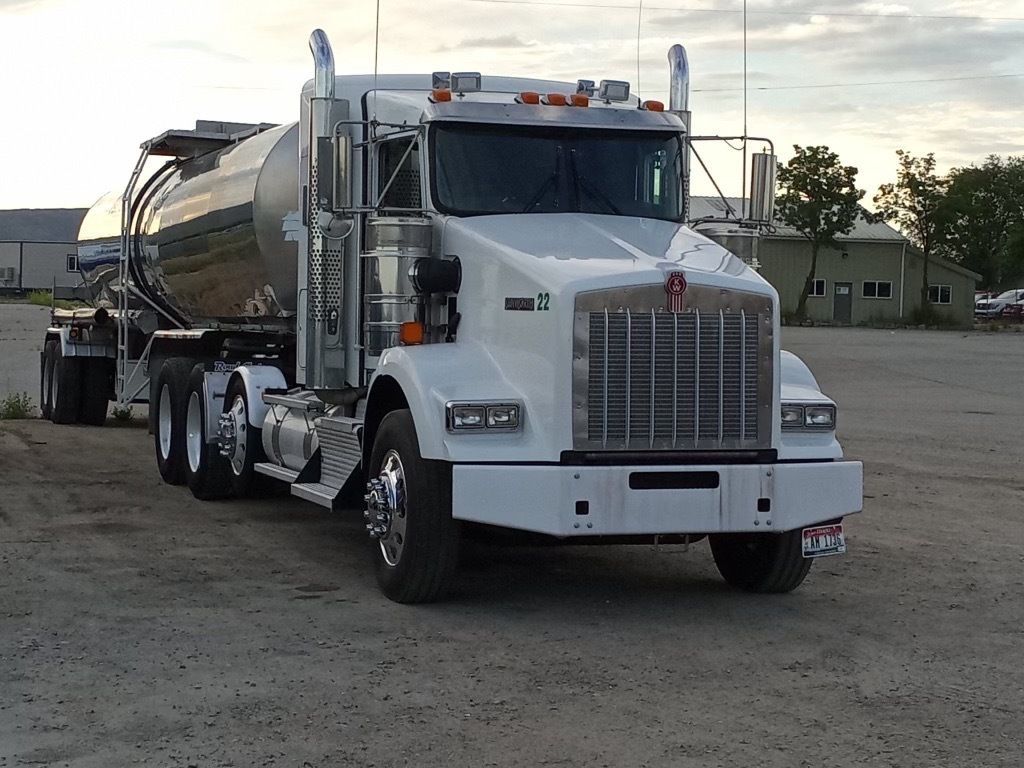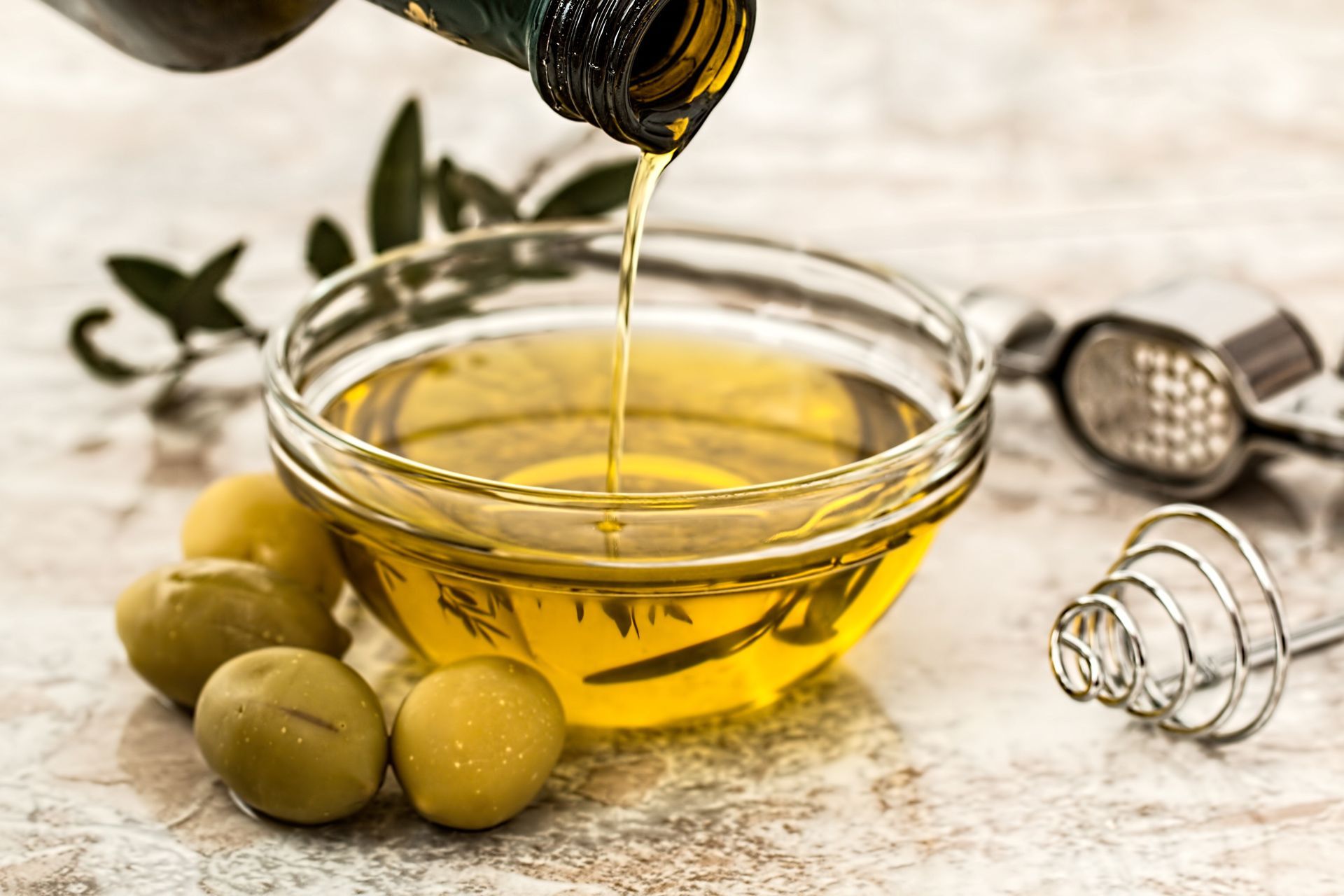Grease Trap Pumping vs. Grease Trap Cleaning: What's The Difference?

Are you confused about the best way to maintain your kitchen's grease trap? In this blog, we'll demystify the crucial differences between grease trap pumping and grease trap cleaning. Understanding these processes is essential for the smooth operation of your commercial kitchen. Join us as we explore the pros, cons, and key considerations to help you make an informed decision and keep your kitchen running efficiently.
Understanding Grease Traps
Imagine your commercial kitchen without a grease trap. It would be like a city without a traffic light at every corner – chaos, blockages, and potential disasters waiting to happen. Grease traps are not just equipment; they are the unsung heroes of your kitchen, ensuring everything flows smoothly, literally and figuratively.
Why Grease Traps?
When fats, oils, and grease (FOG) from your bustling kitchen find their way down the drains, they're out of sight but shouldn't be out of mind. As they cool, they harden and cling to the insides of pipes, leading to major blockages. Enter the grease trap – your kitchen's reliable sentinel, standing guard to capture FOG before it begins its troublesome journey.
Eco-Warriors of the Sewer World
Beyond the kitchen, grease traps are silent eco-warriors. When FOG slips into sewers and reaches natural water bodies, it wreaks havoc on the ecosystem. By trapping FOG, these devices play a pivotal role in safeguarding our waterways, ensuring marine life thrives and water remains clean.
The Law is Watching
It's not just about operational efficiency or environmental stewardship; it's also about staying on the right side of the law. Regulatory bodies are strict with wastewater management. A well-maintained grease trap isn't just good practice; it's a legal mandate. Falling foul of these regulations isn't worth the risk, with penalties ranging from fines to closures.
In essence, grease traps are more than just a component; they're an investment in your business's efficiency, environmental responsibility, and legal compliance. They keep the peace in your kitchen's underworld, ensuring that everything above runs like clockwork.
Grease Trap Pumping
Venturing further into the world of grease traps, let's talk about grease trap pumping – a crucial maintenance task that ensures your kitchen's unsung hero continues to perform at its best.
The What and Why of Pumping
Grease trap pumping is like a regular health check-up for your device. Over time, the trapped FOG accumulates and needs to be removed to prevent overflows and maintain efficiency. Think of it as decluttering; without it, your grease trap can't protect your plumbing or the environment effectively.
The Pumping Process
It's a task best left to professionals. A specialized truck arrives, and through a series of hoses and pumps, the accumulated FOG and solid waste are sucked out of the trap. It's not just about removal; it's about ensuring that the trap is ready to go back to its day job as soon as the service is done.
Industry Standards and Best Practices
There's a science to it. Frequency of pumping depends on several factors – the size of your trap, the volume of your business, and local regulations. The latest industry standards suggest regular inspections and timely pumping to avoid unexpected backups and non-compliance penalties.
Timing is Everything
Here's where the latest data comes into play. Studies indicate that regular pumping, aligned with your kitchen's usage patterns and local guidelines, can significantly extend the life of your grease trap and reduce emergency maintenance costs.
In essence, grease trap pumping isn't just another task on your checklist; it's a critical investment in your kitchen's long-term health and harmony. Stay ahead of the game, and ensure your kitchen's heart beats without a hitch.
Grease Trap Cleaning
While pumping removes the bulk of the waste, grease trap cleaning delves deeper, ensuring every nook and cranny is attended to. It's about maintaining not just functionality, but also hygiene and longevity.
The Nitty-Gritty of Cleaning
Grease trap cleaning is a thorough process. It involves emptying the trap completely, scraping off the FOG deposits, and cleaning all components, including baffles and filters. This is not just cleaning; it's rejuvenation for your grease trap, ensuring optimal performance.
Step-by-Step Process
The process is meticulous. After the waste is removed, each part of the trap is carefully cleaned with appropriate tools and eco-friendly cleaners. It's a task that requires expertise, attention to detail, and an understanding of the system's intricacies.
Tools and Safety Measures
Equipped with the right tools and adhering to stringent safety measures, professionals ensure that the cleaning is not just effective but also safe. Protective gear, proper handling of waste, and adherence to disposal regulations are part of this critical process.
Innovation in Cleaning
The field is evolving, with new methodologies and eco-friendly solutions making their mark. Recent advancements focus on not just cleaning efficiency, but also on reducing environmental impact, aligning with the global push towards sustainability.
In sum, grease trap cleaning is an integral part of kitchen maintenance – a rigorous, detailed process that ensures your grease trap functions flawlessly, supporting your business's operational efficiency and environmental commitments. Regular, professional cleaning is not just maintenance; it's a statement of your business's commitment to quality, hygiene, and environmental stewardship.
Comparing Grease Trap Pumping and Cleaning
Understanding the distinct roles of grease trap pumping and cleaning is key to optimal maintenance. While both are essential, they serve different purposes in the lifecycle of a grease trap.
Pumping vs. Cleaning - The Core Differences
Pumping: This is the removal of accumulated FOG and solids from the trap. It's akin to removing debris from a filter - necessary to keep the system running smoothly.
Cleaning: This goes beyond removal, involving a thorough scrub and sanitation of the trap. It's like deep-cleaning a filter, ensuring every part functions as intended.
When to Pump and When to Clean
Pumping: Typically, this should be done regularly, depending on the usage, capacity of the trap, and local regulations. It's a preventive measure to ensure the trap doesn't reach its capacity.
Cleaning: This is recommended as a part of regular maintenance but can be less frequent than pumping. It's crucial after incidents like overflows or when the trap isn't performing optimally.
Expert Opinions and Best Practices
Industry experts emphasize a balanced approach - regular pumping to prevent blockages and scheduled cleaning to maintain the system's hygiene and efficiency. This not only ensures compliance with regulations but also prolongs the life of the grease trap.
In essence, both pumping and cleaning are non-negotiable aspects of grease trap maintenance. While pumping keeps the system running, cleaning ensures it runs well. Together, they form a comprehensive maintenance regime, safeguarding your kitchen's functionality and your business's reputation.
Best Practices in Grease Trap Maintenance
Maintaining a grease trap isn't just about meeting legal requirements; it's about ensuring a smooth, efficient, and responsible kitchen operation. Here are some best practices that go a long way in effective grease trap maintenance:
Regular Inspections: Stay proactive. Regularly inspect your grease trap for any signs of overflow or underperformance. Early detection can prevent bigger issues.
Scheduled Pumping and Cleaning: Based on your kitchen's volume and local regulations, establish a routine for pumping and cleaning. Consistency is key to preventing emergencies.
Record Keeping: Maintain accurate records of maintenance activities. This not only helps in tracking performance but also ensures compliance with regulatory standards.
Employee Training: Educate your staff about the importance of grease trap maintenance. Simple practices like scraping plates before washing and avoiding disposing of oil down the drain can significantly reduce the load on your grease trap.
Troubleshooting Common Issues: Be equipped to handle minor issues like slow drainage or bad odors. Knowing how to troubleshoot can save time and prevent minor problems from escalating.
Professional Partnerships: Establish a relationship with a reputable maintenance service. Professional expertise not only ensures thorough maintenance but also keeps you updated with the latest industry standards and environmental regulations.
By adhering to these best practices, you not only ensure the longevity of your grease trap but also contribute to a sustainable and responsible culinary environment. Regular maintenance is not just a requirement; it's a testament to your commitment to quality, hygiene, and environmental stewardship.
Legal and Environmental Considerations
Navigating the legal landscape and understanding the environmental implications are crucial aspects of grease trap maintenance. Being well-informed and compliant not only safeguards your business but also contributes to broader environmental conservation efforts.
Legal Requirements for Grease Trap Maintenance
Compliance with Local Regulations: Laws vary by region, but they universally mandate regular grease trap maintenance to prevent sewer blockages and environmental contamination.
Permit and Documentation: Ensure you have the necessary permits for your grease trap. Regularly update and maintain maintenance logs as they can be crucial during inspections.
Environmental Impact of Grease Traps
Protecting Waterways: Properly maintained grease traps prevent FOG from entering and harming local waterways. This helps preserve aquatic life and maintain the quality of our water resources.
Contribution to Sustainability: By preventing blockages and potential spillages, well-maintained grease traps reduce the risk of environmental contamination, aligning your business with broader sustainability goals.
Conclusion
In wrapping up, it's evident that proper grease trap maintenance, encompassing both pumping and cleaning, is pivotal. These aren't mere tasks, but vital practices ensuring smooth kitchen operations, compliance with regulations, and safeguarding of our environmental resources. However, the choice of a service provider is as crucial as the maintenance itself.
For those in Boise, ID, Idaho Falls, ID, and Le Grande, OR, Eco of Idaho stands out as a premier choice. Their service offerings, including Grease Trap Cleaning and Oil Collection, Cooking Oil Collection, Grease Trap Pumping, and Bulk Waste Water Transport, cater comprehensively to your needs.
What truly sets Eco of Idaho apart are their key differentiators:
Affordability: Their services are priced competitively, offering significant value without compromising on quality.
One-Stop Solution: With Eco of Idaho, you can address multiple needs through a single point of contact, simplifying your operations and saving you valuable time.
Discounted Grease Trap Services: Their ability to sell cooking oil translates into discounted rates for their grease trap services, offering you a unique cost advantage.
Environmental Stewardship: Partnering with Eco of Idaho aligns with environmental responsibility, as they are committed to sustainable practices.
In a landscape where business efficiency, legal compliance, and environmental responsibility are paramount, Eco of Idaho emerges as a partner that understands and fulfills these complex needs. Choose Eco of Idaho for a seamless, affordable, and eco-conscious approach to your grease trap maintenance needs.










